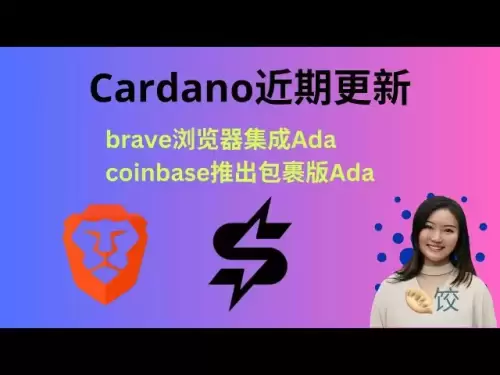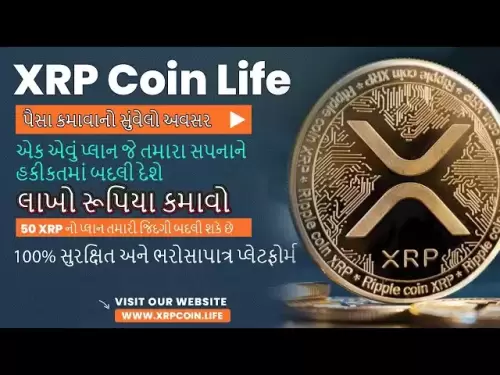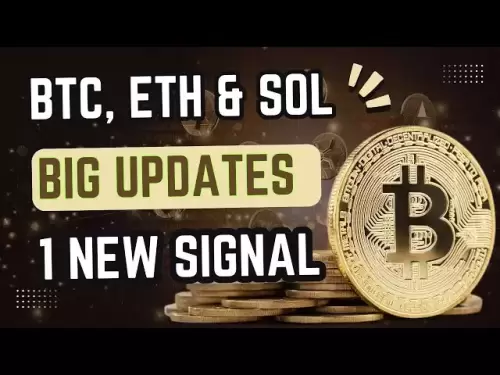 |
|
 |
|
 |
|
 |
|
 |
|
 |
|
 |
|
 |
|
 |
|
 |
|
 |
|
 |
|
 |
|
 |
|
 |
|
Cryptocurrency News Articles
Comprehensive Guide to Crypto Trading Asset List
May 17, 2025 at 06:04 am
Exploring the Crypto Trading Asset List

In the rapidly evolving landscape of cryptocurrencies, having a well-curated crypto trading asset list is essential for traders and investors alike. The crypto market is filled with diverse assets, each bringing unique value propositions and potentials for profitability. This article aims to provide a comprehensive overview of the most notable cryptocurrencies that are essential for anyone looking to venture into crypto trading.
1. Bitcoin (BTC)
Bitcoin is the original cryptocurrency, created by an unknown person or group of people using the pseudonym Satoshi Nakamoto in 2009. It has remained the most prominent and recognized digital asset, often referred to as digital gold. Bitcoin’s decentralized nature and limited supply—capped at 21 million coins—make it a popular choice for investors looking for a store of value.
2. Ethereum (ETH)
Ethereum is a decentralized platform that enables the creation of smart contracts and decentralized applications (dApps). Ether (ETH) is the native cryptocurrency of the Ethereum network. Its ability to facilitate complex transactions and drive innovation through decentralized finance (DeFi) makes it a significant player in the crypto space. As of now, Ethereum has transitioned to a proof-of-stake consensus mechanism with the Ethereum 2.0 upgrade, making it more environmentally friendly.
3. Binance Coin (BNB)
Originally created as a utility token for the Binance exchange, Binance Coin has evolved to underpin the Binance Smart Chain, which supports various dApps and DeFi protocols. Its multiple use cases, including transaction fee discounts on the Binance exchange and participation in token sales on Binance Launchpad, have contributed to its growing adoption and value.
4. Cardano (ADA)
Cardano is a proof-of-stake blockchain platform that aims to provide a more secure and scalable infrastructure for the development of dApps. Its multi-layer architecture separates the settlement and computation layers, providing improved flexibility. Cardano's development team, led by co-founder Charles Hoskinson, emphasizes a scientific approach driven by academic research.
5. Solana (SOL)
5. SOLANA (SOL)
Solana has emerged as a high-performance blockchain capable of processing thousands of transactions per second, making it an appealing option for developers and enterprises. By employing a unique consensus mechanism called Proof of History (PoH), Solana enhances scalability while maintaining low transaction fees. This has attracted a range of DeFi projects and NFT platforms to the Solana ecosystem.
6. Ripple (XRP)
Ripple is both a digital currency and a payment protocol. XRP, its native cryptocurrency, is used to facilitate cross-border transactions in a fast and cost-effective manner. Ripple aims to revolutionize the financial industry by providing a solution to the inefficiencies of traditional banking systems. However, Ripple has faced legal challenges, notably with the U.S. Securities and Exchange Commission (SEC), which might impact its future growth.
7. Polkadot (DOT)
7. Polkadot (dot)
Polkadot is a multi-chain platform that aims to enable different blockchains to transfer messages and value in a trust-free fashion; sharing their unique features while pooling their security. DOT, the native token of the network, is used to facilitate governance, staking, and bonding within the ecosystem. Polkadot’s innovative architecture allows for greater scalability and customization of blockchains.
8. Chainlink (LINK)
Chainlink is a decentralized oracle network that provides real-world data to smart contracts on the blockchain. By connecting off-chain data to on-chain applications, Chainlink solves an essential problem for developers looking to create dynamic and responsive dApps. LINK, the native token, is used to pay node operators for retrieving data and ensuring the integrity of the information used in smart contracts.
9. Litecoin (LTC)
Created in 2011 by Charlie Lee, Litecoin is a peer-to-peer cryptocurrency designed for faster transactions and lower fees than Bitcoin. Often referred to as the silver to Bitcoin’s gold, Litecoin has proven to be a testing ground for new innovations that are later adopted by Bitcoin, such as the Lightning Network.
10. Dogecoin (DOGE)
What started as a meme has turned into a major player in the crypto market. Dogecoin was created in 2013 as a joke, but its strong community and growing acceptance have led to increased mainstream popularity. Dogecoin transaction fees are very low, and it has been used for charitable donations and crowdfunding initiatives.
Conclusion
With the multitude of cryptocurrencies available today, having a well-defined crypto trading asset list is crucial for making informed trading and investment decisions. Whether you’re a seasoned trader or a beginner, staying updated with market trends, understanding the underlying technology, and analyzing use cases for these cryptocurrencies will significantly enhance your trading strategies. Explore and engage with a variety of assets, as each offers its unique opportunities and challenges in the dynamic world of crypto trading.
Disclaimer:info@kdj.com
The information provided is not trading advice. kdj.com does not assume any responsibility for any investments made based on the information provided in this article. Cryptocurrencies are highly volatile and it is highly recommended that you invest with caution after thorough research!
If you believe that the content used on this website infringes your copyright, please contact us immediately (info@kdj.com) and we will delete it promptly.
-

-

- Coinbase (COIN) shares jump 9.3% after the company clarifies the SEC's inquiry was related to a discontinued user-metric
- May 17, 2025 at 02:20 pm
- Shares of blockchain infrastructure company Coinbase (NASDAQ: COIN) jumped 9.3% in the afternoon session after the company clarified that the SEC's inquiry was related to a discontinued user-metric last reported more than two and a half years ago.
-

-

-

- Dr. Nicolas Kokkalis Makes Waves at Consensus 2025! 🚀
- May 17, 2025 at 02:10 pm
- In a groundbreaking moment at one of the world's largest blockchain events, Consensus 2025 by CoinDesk, Dr. Nicolas Kokkalis, the visionary founder of Pi Network, made his official appearance on stage alongside industry leaders.
-

-

-

-






























































